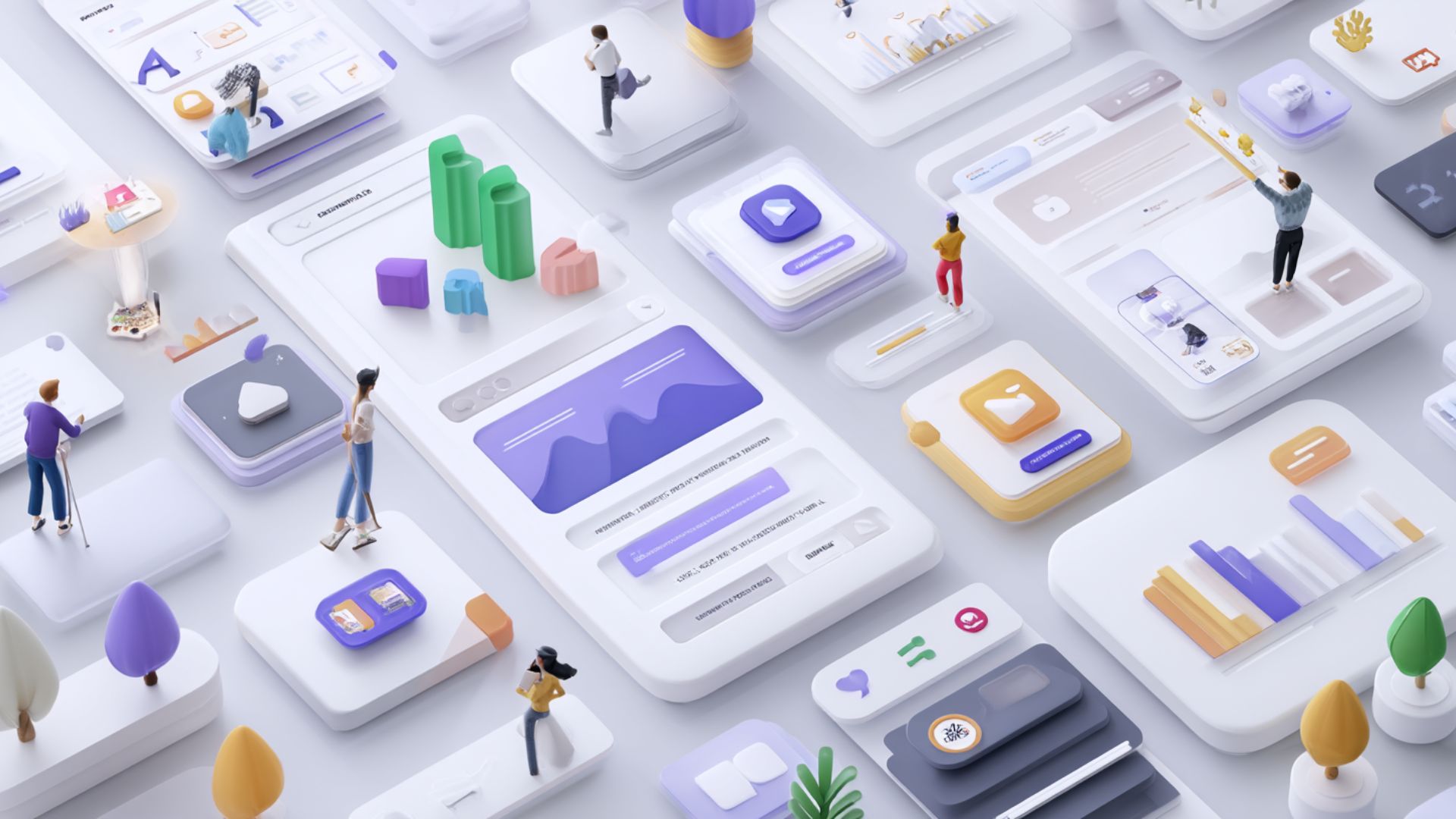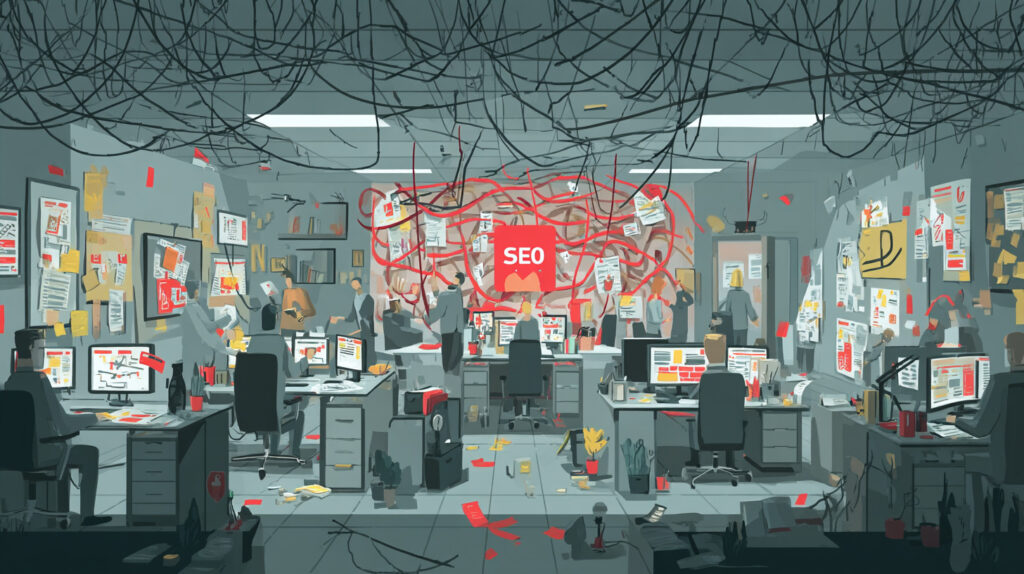In today’s competitive digital landscape, a website must do more than look good—it must deliver a seamless and engaging experience to attract and retain users. User Interface (UI) and User Experience (UX) design are pivotal in shaping how visitors interact with your site, but their impact extends far beyond aesthetics. Research suggests that intuitive UI/UX can significantly boost Search Engine Optimisation (SEO), driving organic traffic by improving user engagement metrics that search engines prioritise. Conversely, poor design can sabotage both SEO efforts and business goals. In this article, we explore how UI/UX and SEO work together, why bad design is detrimental, and how real-life examples demonstrate the power of user-centric design.
Discover how our free consultancy can help unlock your website’s full potential.
Understanding UI/UX and SEO
What Is UI?
User Interface (UI) encompasses a website’s visual and interactive elements, including layouts, colours, buttons, typography, and imagery. It’s about creating an appealing and functional design that users can easily interact with, much like the dashboard of a car, which is both attractive and intuitive.
What Is UX?
User Experience (UX) focuses on a user’s overall journey on your website. It measures how easy, enjoyable, and efficient it is to navigate, find information, or complete tasks. UX is about ensuring users leave your site satisfied, with their needs met seamlessly.
What Is SEO?
Search Engine Optimisation (SEO) is the process of optimising a website to rank higher on search engine results pages (SERPS), such as Google, to attract organic (unpaid) traffic. SEO involves technical, content, and user engagement strategies to make a site more visible and relevant to search queries.
The Connection Between UI/UX and SEO
While UI/UX and SEO may seem like distinct disciplines, they are deeply intertwined. Search engines like Google aim to deliver the best possible results to users, prioritising websites that offer a positive experience. Metrics such as bounce rates (when users leave after viewing one page), session durations (time spent on the site), and click-through rates (CTR, clicks from search results) are influenced by UI/UX and play a critical role in determining search rankings. A well-designed website with an intuitive UI/UX can improve these metrics, signalling that the site is valuable and relevant to search engines.
How UI/UX Drives Organic Traffic
The evidence leans toward UI/UX being a powerful driver of SEO success by enhancing user engagement and aligning with search engine algorithms. Here’s how intuitive UI/UX contributes to organic traffic:
Key Metrics Improved by UI/UX
- Lower Bounce Rates: A user-friendly website encourages visitors to explore multiple pages, reducing the likelihood of them leaving immediately. Low bounce rates indicate to search engines that your content is relevant and engaging.
- Longer Session Durations: Intuitive navigation and compelling content keep users on your site longer, signalling quality and value to search engines.
- Higher Click-Through Rates (CTR): A visually appealing and trustworthy site in search results is more likely to attract clicks, boosting its ranking potential.
- Improved Dwell Time: When users quickly find what they need, they spend more time engaging with your content, a positive signal for SEO.
Specific UI/UX Elements That Impact SEO
Certain UI/UX elements directly influence SEO performance, making them critical areas of focus:
| UI/UX Element | Impact on SEO |
|---|---|
| Page Load Speed | Fast-loading pages improve user satisfaction and are a confirmed Google ranking factor. |
| Mobile-Friendliness | With over 50% of web traffic from mobile devices, responsive design is essential for SEO and user retention. |
| Easy Navigation | Clear, intuitive site structures help users find information quickly, reducing bounce rates. |
| Clear CTAs | Well-placed and understandable calls-to-action drive user actions, improving engagement and conversions. |
| High-Quality Content | Engaging, relevant, and well-organized content keeps users on your site longer, boosting SEO signals. |
By optimizing these elements, businesses can create a website that delights users and ranks higher in search results, driving more organic traffic.
Why Bad Design Harms SEO and Business Goals
Poor UI/UX can devastate both SEO performance and business outcomes, creating a cycle of reduced visibility and lost opportunities. Here’s how bad design undermines your efforts:
SEO Consequences of Poor UI/UX
- High Bounce Rates: A confusing layout, slow load times, or unappealing design can quickly drive users away, signalling to search engines that your site isn’t relevant or valuable.
- Short Session Durations: Users who struggle to navigate or find information won’t stay long, reducing dwell time and harming SEO rankings.
- Low Click-Through Rates: An unprofessional or untrustworthy appearance in search results can deter clicks, limiting organic traffic.
- Over-Optimisation Risks: SEO tactics like keyword stuffing can degrade UX by making content unnatural or hard to read, negatively affecting user engagement and rankings.
Business Impacts of Bad Design
Beyond SEO, poor UI/UX directly affects business goals:
- Lost Conversions: A frustrating or unclear website can deter users from completing actions like purchasing products or filling out forms, reducing revenue or leads.
- Negative Brand Perception: A poorly designed site can erode trust and credibility, making users less likely to choose your brand over competitors.
- Increased Support Costs: Confusing interfaces may lead to more customer inquiries and increased operational costs, as seen in Virgin America’s case before their redesign.
In short, bad UI/UX lowers search rankings and alienates potential customers, making it a critical issue for businesses aiming to succeed online.
Real-Life Examples of UI/UX Improving SEO
Real-world case studies highlight the transformative power of intuitive UI/UX on SEO and business outcomes. Here are two compelling examples:
Case Study 1: Virgin America
Virgin America, an airline company, undertook a website redesign focused on user experience principles to streamline the booking process and enhance usability. Key improvements included faster page load speeds, simplified navigation, and a more intuitive interface. The results were significant:
- 14% Increase in Conversion Rates: More users completed bookings, directly boosting revenue.
- 20% Decrease in Customer Service Calls: Enhanced usability reduced the need for support, lowering operational costs.
- Faster Ticket Booking: Tickets were booked nearly twice as fast, improving user satisfaction and engagement.
These improvements likely contributed to better SEO performance by reducing bounce rates and increasing session durations, as users found the site more engaging and efficient (UX/UI Design Impact).
Case Study 2: Elliott Davidson
Elliott Davidson, a digital marketing consultant, revamped his personal website to improve user experience and SEO. The redesign focused on the homepage and included site-wide changes such as:
- Updated Homepage CTA: Changed to “How can I help you,” resulting in a 61% increase in navigation bar clicks and a 4% increase in hero CTA clicks.
- Personal Hero Image: Added a photo of himself, leveraging research showing 48% more conversions with human faces.
- Conversational Messaging: Revised to be more approachable, enhancing user connection.
- Case Studies for Social Proof: Added to build authority and trust.
- Streamlined Layout: Adopted block sections, removed sidebars, and eliminated low-performing footer contact forms, improving navigation and engagement.
The results were remarkable:
- 300% Increase in Impressions: The site appeared more frequently in search results, driving organic traffic.
- Doubled Conversion Rates: Improved UX led to more users contacting Davidson, generating significant business value.
These changes demonstrate how targeted UI/UX improvements can dramatically enhance SEO and user engagement (UX SEO Case Study).
Balancing UI/UX and SEO: Best Practices
To maximise the SEO advantage of intuitive UI/UX, businesses should adopt a balanced approach that prioritises user satisfaction and search engine requirements. Here are some best practices:
- Optimise Page Load Speed: Use tools like Google PageSpeed Insights to identify and fix performance bottlenecks.
- Ensure Mobile-Friendliness: Test your site on multiple devices to ensure a seamless experience, as mobile-friendliness is a key ranking factor.
- Simplify Navigation: Create a clear site structure with intuitive menus and internal linking to guide users effectively.
- Design Clear CTAs: Place prominent, action-oriented CTAs to drive conversions without overwhelming users.
- Focus on Quality Content: Produce engaging, relevant content that aligns with user intent and avoids SEO pitfalls like keyword stuffing.
- Monitor User Behaviour: Use analytics tools like Google Analytics to track bounce rates, session durations, and CTR, adjusting UI/UX based on insights.
By integrating these practices, businesses can create a website that delights users and ranks well in search results.
The SEO Advantage of Intuitive UI/UX
The evidence is clear: intuitive UI/UX is a game-changer for SEO, by improving user engagement metrics like bounce rates, session durations, and CTR, a well-designed website signals to search engines that it deserves a higher ranking. This, in turn, drives more organic traffic, helping businesses reach a wider audience. Moreover, a positive user experience fosters trust, encourages conversions, and strengthens brand loyalty, aligning SEO success with broader business goals. The case studies of Virgin America and Elliott Davidson illustrate the tangible benefits of prioritising UI/UX, from increased conversions to enhanced visibility.
Next Step: Free Consultancy from Whizz People
Ready to harness the power of UI/UX to boost your SEO and drive organic traffic? We offer free consultancy to evaluate your website and provide tailored recommendations for improving user experience and search rankings. Our team of experts understands the delicate balance between UI/UX and SEO, ensuring your site delivers exceptional results.
Don’t let poor design hold your business back—contact us today to take the first step toward a more effective website.
Conclusion
Intuitive UI/UX is not just a design choice—it’s a strategic advantage for SEO and business success. Creating a visually appealing, easy-to-navigate, and user-focused website can improve key engagement metrics, boost search rankings, and achieve your business objectives. Poor design, on the other hand, can lead to lower rankings, lost conversions, and damaged brand reputation. Learn from success stories like Virgin America and Elliott Davidson, and invest in UI/UX to unlock your website’s full potential. With our free consultancy, you can start this journey today. Act now to drive more organic traffic and elevate your online presence.




